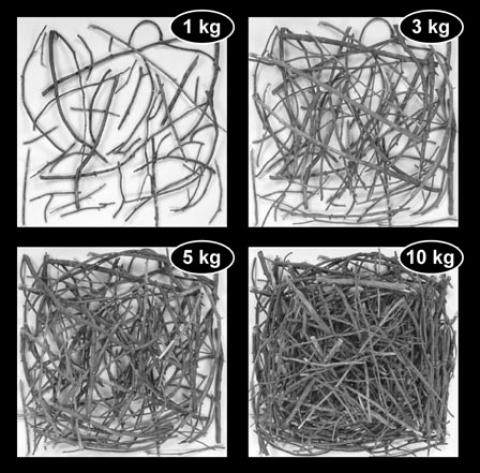The Photoload method is a fuel sampling method to quickly and accurately estimate loadings for surface fuel components using downward-looking and oblique photographs depicting sequences of graduated fuel loadings by fuel component.
Estimates of fuel loadings in forest and rangeland ecosystems of the United States are critical for accurately predicting fire behavior and effects of alternative fuel and ecosystem restoration treatments. Accurately measuring surface fuel loadings in the field is difficult because it requires a complex integration of several sampling methods designed for implementation at disparate scales. A new fuel sampling method, called the photoload sampling technique, was developed to quickly and accurately estimate loadings for six surface fuel components using downward-looking and oblique photographs depicting sequences of graduated fuel loadings by fuel component. The six components are the four size classes of downed dead woody (1 hour, 10 hour, 100 hour, 1000 hr), shrub, and herbaceous fuels. This technique involves visually comparing fuel conditions observed in the field with photoload sequences to estimate fuel loadings. Photoload sequences are a series of downward-looking and close-up oblique photographs depicting a sequence of graduated fuel loadings of synthetic fuelbeds for each of the six fuel components. There is a standard sampling protocol that uses the developed photoload sequences to estimate fuel loading in the field. Photoload sequences were developed for common fuel components of the northern Rocky Mountains of Montana, USA. A companion publication details the methods used to create the photoload sequences. There is also a training guide to calibrate visual estimates using photos, and there is currently a guide on how to create photoload sequences in the field. A comprehensive evaluation of the technique using 29 participants across five sites in western Montana is also available along with a video.
We are currently developing the Photoload Library that builds on the original sequences by collating additional photosequences and other resources about the Photoload sampling method. If you've developed a Photoload sequence, please contact us to have your sequence added to the library.
